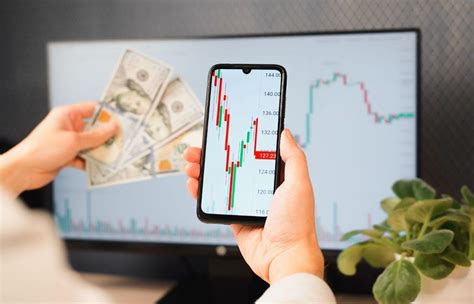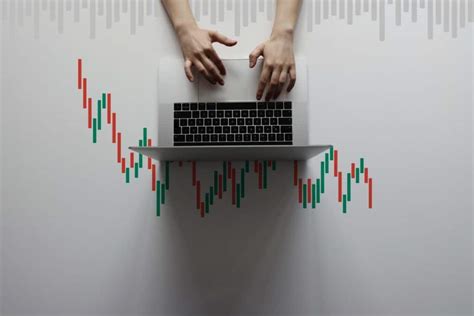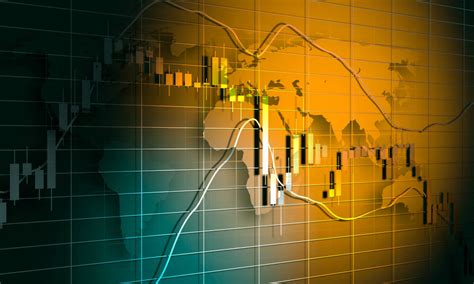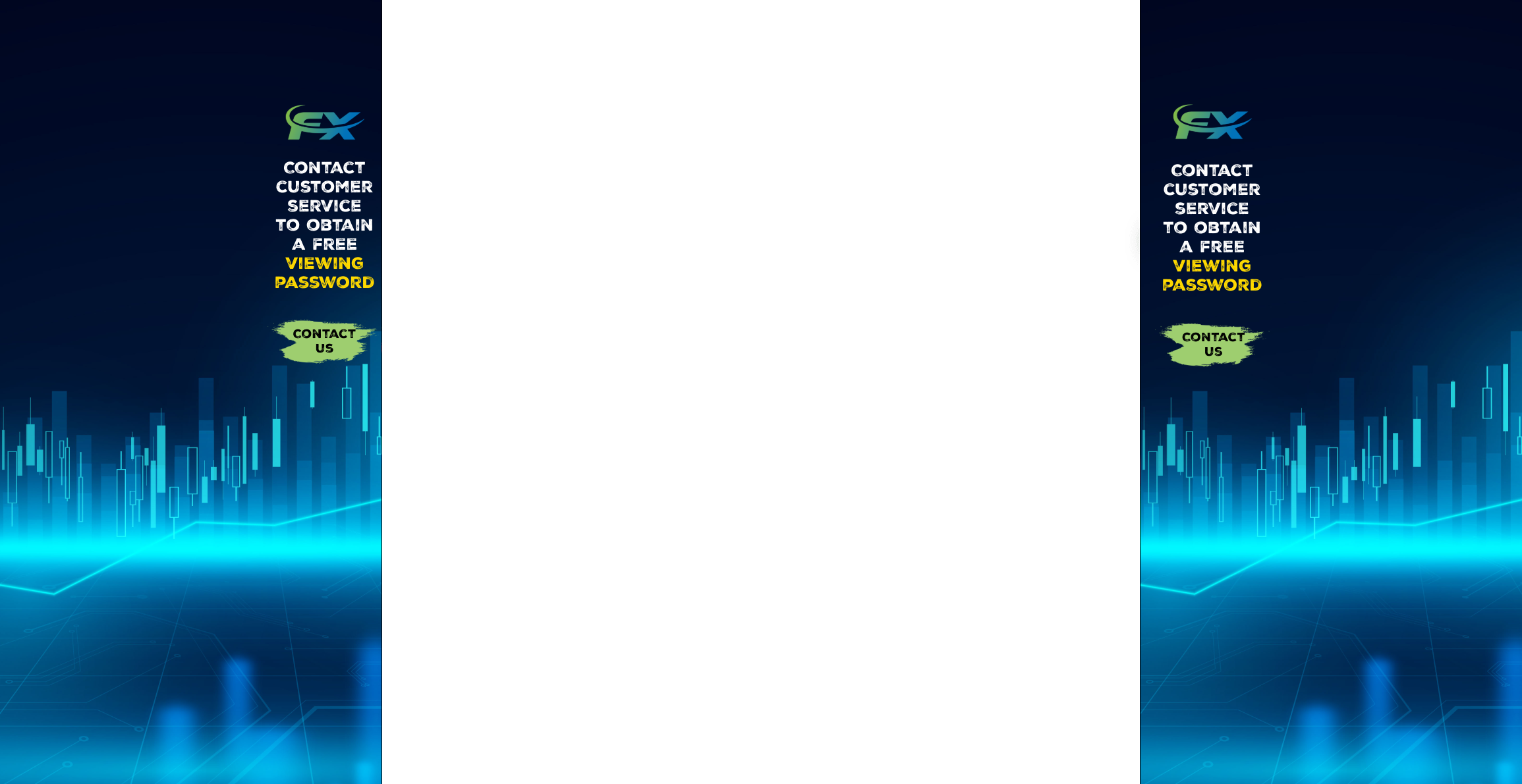
The forex market is the world’s largest and most liquid financial marketplace, where currencies are traded in enormous volumes every day. With over $6 trillion in daily transactions, it plays a pivotal role in the global economy. One of the most frequently traded pairs within this vast market is EUR/USD, which accounts for a significant portion of forex trading activity. Understanding how much of the forex market is dominated by EUR/USD can offer valuable insights into market liquidity, volatility, and the factors that drive currency exchange rates.
Currency Pairs and Market Liquidity
The forex market operates around a multitude of currency pairs, where the relationship between two different currencies determines the exchange rate. Understanding the liquidity dynamics within the market is essential for grasping how major pairs like EUR/USD remain dominant.
EUR/USD: The Most Traded Pair in the Forex Market
Most Traded Currency Pair: EUR/USD is the most traded pair globally, making up nearly 24% of the total daily forex trading volume.
Why It Stands Out: The Eurozone and the United States are two of the largest economies in the world, driving significant demand for EUR/USD across global markets.
Central Bank Influence: The European Central Bank (ECB) and Federal Reserve (Fed) heavily influence EUR/USD due to their monetary policies, interest rate decisions, and interventions in forex markets.
Impact of Economic Indicators: Key data from both the United States and the Eurozone, such as GDP growth, unemployment rates, and inflation, play a crucial role in determining the EUR/USD exchange rate.
Market Liquidity: Why EUR/USD Dominates Forex Trading
High Trading Volume: The sheer volume of EUR/USD trades contributes to its high liquidity, ensuring that large positions can be entered and exited with minimal price impact.
Bid-Ask Spread: The pair typically exhibits narrow bid-ask spreads, which reduce the cost of executing trades, making it attractive to both retail traders and institutional investors.
Institutional Preferences: Major banks and investment firms gravitate toward EUR/USD due to its liquidity, stability, and relatively low volatility compared to other pairs.
Global Trading Hours: With major trading hubs in New York, London, and Frankfurt, EUR/USD trades almost 24 hours a day, adding to its liquidity.
The Role of the USD in Global Currency Markets
The United States Dollar (USD) is central to the forex market, playing a significant role in global trade and finance. Its widespread use as the world’s reserve currency ensures its dominance in pairs like EUR/USD, USD/JPY, and GBP/USD. Central banks around the world hold substantial USD reserves, further reinforcing its liquidity.
Global Reserve Currency: USD is the primary reserve currency, held by central banks to stabilize their own currencies and economies.
Oil and Commodity Pricing: The USD is used for pricing most commodities, including oil, making it integral to global trade.
USD-Centric Pairs: Pairs such as USD/JPY and USD/CHF, where the dollar is the base currency, see high trading volumes due to the dollar's role in the global economy.
How Other Major Currency Pairs Compare to EUR/USD
While EUR/USD is the most traded pair, other major currency pairs also hold significant market share in the forex market.
USD/JPY: This pair represents the second most traded pair, driven by the economic strength of Japan and the United States. It typically features a lower spread than many emerging market currencies.
GBP/USD: Known as “Cable,” this pair is influenced by UK economic policies, the Bank of England’s interest rate decisions, and political events like Brexit.
AUD/USD: As the Australian Dollar is heavily influenced by commodity exports, this pair is also an essential indicator of global economic health, particularly in Asia-Pacific markets.
Economic Factors Driving Forex Market Trends
Understanding the economic factors that influence currency values is crucial for forex traders. Macroeconomic indicators, such as inflation rates, GDP growth, and unemployment, play a pivotal role in driving trends within the forex market, particularly the EUR/USD pair.
Inflation and Interest Rates: Key Drivers of Currency Value
Inflation and Its Effect: High inflation erodes a currency’s purchasing power, which can lead to lower demand for that currency. As the Eurozone and the United States both track inflation rates closely, these trends influence the EUR/USD exchange rate.
Interest Rate Differentials: Central banks, like the Federal Reserve and the European Central Bank, set interest rates to combat inflation. Higher interest rates in one region can attract investment, strengthening its currency.
Impact on Currency Strength: When interest rates rise, the value of a currency generally increases, as investors seek better returns in that currency, pushing up demand and liquidity.
Relationship Between Inflation and Interest Rates: Central banks often raise interest rates to combat high inflation, creating a cycle that directly affects currency values and forex trading trends.
GDP Growth and Unemployment: Indicators of Forex Market Sentiment
GDP growth and unemployment rates provide insight into a nation's economic health. Traders use these data points to gauge the strength of the underlying economy, influencing decisions in currency trading.
Positive GDP Growth: A strong GDP growth indicates a healthy economy, attracting foreign investment and boosting demand for the local currency, thus strengthening the exchange rate.
Unemployment Trends: Rising unemployment can signal economic struggles, leading to weakening currency demand. Conversely, low unemployment tends to support stronger currencies.
Impact on EUR/USD: Economic growth in the United States or Eurozone can lead to volatility in EUR/USD, depending on which economy is growing faster.
The Impact of Retail Sales and Manufacturing PMI on EUR/USD
Retail sales and Manufacturing PMI (Purchasing Managers Index) are leading indicators that reflect consumer activity and industrial performance, which are critical in assessing the economic health of a region.
<Step 1> Retail Sales Influence: Strong retail sales indicate consumer confidence and spending, supporting currency demand. In the United States, robust retail sales often lead to a stronger USD, while weak retail sales may signal a slowdown.
<Step 2> Manufacturing PMI Trends: A rising Manufacturing PMI suggests growth in industrial output, which can lead to increased demand for a country’s currency. Higher PMI readings are generally a positive sign for EUR/USD if the Eurozone's manufacturing sector is outperforming the US.
| Indicator | Impact on EUR/USD | US Impact | Eurozone Impact |
|---|---|---|---|
| Retail Sales Growth | Strengthens USD | Positive | Weakens EUR |
| Manufacturing PMI | Strengthens USD | Positive | Strengthens EUR |
| High Retail Sales | Weakens EUR/USD | Weakens EUR | Neutral |
The Role of Consumer Confidence in Forex Trading Decisions
Consumer confidence measures how optimistic or pessimistic consumers are about the economy. When consumers feel confident, they are more likely to spend, stimulating economic growth.
US Consumer Confidence: High consumer confidence in the US often results in a stronger USD as it signals future economic stability, leading to increased forex trading activity.
Eurozone Confidence: Similarly, rising consumer confidence in the Eurozone strengthens the euro against other currencies, impacting EUR/USD dynamics.
Impact on EUR/USD: When consumer confidence diverges between the US and the Eurozone, it can cause fluctuations in the EUR/USD exchange rate as traders respond to the perceived future economic conditions in either region.

How Economic Reports Influence EUR/USD Price Movements
Economic reports provide the data traders rely on to predict currency price movements. Important reports such as inflation data, GDP figures, and unemployment rates directly influence trading decisions in the forex market.
Market Reactions to Data: The release of economic data can cause sharp movements in the forex market, especially when the data deviates from analyst expectations.
Volatility and Liquidity: High-impact reports like the US Non-Farm Payrolls or Eurozone GDP growth data often lead to increased volatility and trading volume in EUR/USD, presenting both risks and opportunities for traders.
Predicting EUR/USD Movements: By analyzing economic reports, traders can anticipate the direction in which the EUR/USD pair will move, adjusting their strategies accordingly.
The Influence of Central Banks on the Forex Market
Central banks, such as the Federal Reserve and the European Central Bank, have a profound impact on currency markets, particularly in major currency pairs like EUR/USD. Their policies, from interest rate adjustments to quantitative easing and interventions, are key drivers of currency movements.
Federal Reserve and the Dollar: The Global Impact on Forex Trading
Monetary Policy: The Federal Reserve’s decisions on interest rates and monetary tightening/loosening have a major impact on the strength of the USD. A rate hike often strengthens the dollar by attracting higher yields.
Global Influence: As the world's reserve currency, changes in USD value can ripple across global forex markets, affecting commodities, emerging markets, and cross-currency exchange rates.
Impact on EUR/USD: Any shift in Fed policy, such as rate cuts or hikes, directly affects EUR/USD volatility, with the USD strengthening or weakening depending on the policy shift.
European Central Bank's Role in EUR/USD Movements
The European Central Bank (ECB) is central to the movements of the EUR/USD pair, as its policies are directly linked to the economic health of the Eurozone.
ECB's Influence: Similar to the Fed, the ECB adjusts interest rates and engages in monetary interventions, such as quantitative easing, to manage inflation and stimulate the economy.
EUR/USD Price Sensitivity: Changes in ECB rates, policy statements, and economic forecasts can influence the EUR/USD price. A shift towards monetary tightening by the ECB often strengthens the euro, while easing measures can weaken it.
How Central Bank Policies Shape Forex Market Sentiment
Central banks are key players in shaping market sentiment, often guiding expectations regarding economic growth, inflation, and currency strength. Traders closely monitor central bank rhetoric and actions to gauge future market directions.
Market Perception: If the market perceives a central bank's actions as hawkish (e.g., interest rate hikes), the currency of that country typically strengthens. Conversely, dovish actions (rate cuts, monetary easing) can weaken the currency.
EUR/USD Sentiment: Central banks' contrasting policies (like the ECB's easing vs. the Fed’s tightening) can cause fluctuations in the EUR/USD, depending on which region’s economy appears to be stronger.
The Role of Interest Rate Differentials in Currency Pairs
Interest rate differentials between two countries play a significant role in forex price movements, particularly for pairs like EUR/USD.
<Step 1> Interest Rate Influence: Higher interest rates in one country can attract capital inflows, boosting demand for that country’s currency.
<Step 2> EUR/USD Impact: A widening interest rate differential between the US and Eurozone (with the Fed hiking rates more aggressively than the ECB) typically leads to USD strength against the euro, and vice versa.
<Step 3> Trader Reactions: Forex traders often position themselves based on expectations of future interest rate differentials, driving speculation on currency direction.
Understanding Quantitative Easing and Its Impact on EUR/USD
Quantitative easing (QE) involves central banks purchasing government securities to inject liquidity into the economy, a policy used when interest rates are already near zero.
ECB’s QE: The European Central Bank has engaged in several rounds of QE to support the Eurozone economy, which typically leads to euro depreciation as an increase in liquidity makes the currency less attractive.
US Federal Reserve’s QE: The Federal Reserve has also used QE, especially during economic slowdowns. While it initially weakens the USD, the Fed’s tightening or unwinding of QE can lead to USD appreciation as the economy strengthens.
EUR/USD Effects: The differing pace and scale of QE policies between the US and Eurozone often impact the EUR/USD exchange rate, with more aggressive easing leading to a weaker euro.
Central Bank Interventions and Their Influence on Market Liquidity
Central banks sometimes intervene directly in the forex market to stabilize currency volatility or to influence exchange rates.
Direct Interventions: Central banks may buy or sell large amounts of their currency in the forex market to influence its value. These interventions typically occur during times of excessive volatility or when a currency is deemed too weak or too strong.
Liquidity Impact: Central bank interventions can provide liquidity to the forex market, making it easier for traders to execute large orders without drastically affecting currency prices.
EUR/USD Market Liquidity: The ECB and the Fed are key players in maintaining liquidity in the forex market. Their interventions, whether through direct forex market actions or through influencing interest rates, have a significant impact on EUR/USD liquidity, often enhancing or reducing trading volumes.
| Central Bank Activity | Effect on EUR/USD | Example Action | Market Impact |
|---|---|---|---|
| Interest Rate Hikes | Strengthens USD | Fed raises rates to curb inflation | USD appreciation vs EUR |
| Quantitative Easing | Weakens EUR | ECB buys Eurozone government bonds | Euro depreciation |
| Direct Market Intervention | Stabilizes currency | Fed intervenes to support USD value | Increased liquidity in EUR/USD |

Geopolitical Events and Their Impact on the Forex Market
Geopolitical events, ranging from political instability to global crises, can drastically shift forex market trends, particularly affecting key currency pairs like EUR/USD.
Political Instability and Its Effects on Currency Pairs
Uncertainty Drives Volatility: Political instability, whether due to elections, coups, or regime changes, often leads to uncertainty. This uncertainty can cause a sharp drop in investor confidence, resulting in increased volatility.
Currency Depreciation: Countries experiencing political turmoil tend to see their currencies depreciate as capital outflows increase. Investors seek safer assets like the USD or gold, causing the local currency to weaken.
EUR/USD Impact: For example, political instability in the Eurozone can drive the EUR lower, especially if markets fear that it will lead to economic slowdowns or impact EU cohesion. Similarly, political unrest in the U.S. may cause fluctuations in USD strength.
The Impact of Trade Disputes on EUR/USD Trading Volume
Trade disputes, particularly those involving major economies, can lead to significant fluctuations in the forex market, especially in the EUR/USD pair.
<1> Market Reactions: When trade tensions rise, especially between the U.S. and other large economies like China or the EU, uncertainty about economic growth increases. Traders typically react by reducing exposure, leading to lower trading volume and higher spreads in currency pairs like EUR/USD.
<2> Risk-Off Sentiment: In trade disputes, investors often adopt a risk-off attitude, retreating into safe-haven assets such as the USD, thus causing the EUR to weaken against the dollar.
<3> Liquidity Shifts: These events often cause shifts in liquidity. As traders position for economic slowdown, EUR/USD volumes may decrease, and liquidity can become more volatile, making it harder for traders to execute orders.
How Global Crises (Pandemics, Wars) Shift Forex Market Trends
Global crises, including pandemics and wars, significantly disrupt economic activity, and these events often lead to sharp shifts in forex market trends. The effects of such crises can be long-lasting and unpredictable.
The COVID-19 pandemic is a prime example of how a global crisis can reshape currency markets. Initially, the outbreak of COVID-19 in early 2020 led to a flight to safety, with investors flocking to the USD and other safe-haven currencies as the global economy reeled from the uncertainty. Central banks, including the Federal Reserve and the European Central Bank, responded with aggressive monetary policies, including rate cuts and quantitative easing.
Similarly, geopolitical tensions and wars, such as the ongoing conflict in Ukraine, can cause fear and uncertainty. These events typically lead to increased volatility in EUR/USD, as markets react to changes in global trade, energy prices, and economic forecasts. In such times, the USD often strengthens due to its status as a global reserve currency and a safe haven during times of crisis.
Pandemics: Economic lockdowns and disruptions in supply chains reduce GDP growth, leading to weakness in currencies of affected countries.
Wars: Wars cause significant disruptions to trade and investment, often leading to long-term inflationary pressures and driving capital away from the affected region.
The Influence of Geopolitical Risk on Central Bank Decisions
Geopolitical risks, such as conflicts or trade wars, can influence the decisions of central banks as they aim to maintain economic stability.
Fed's Response to Global Instability: The Federal Reserve may lower interest rates or engage in QE if geopolitical risks threaten to slow U.S. economic growth. This can lead to USD depreciation as investors anticipate lower returns on U.S. assets.
ECB's Strategy: The European Central Bank may adopt a more dovish stance in response to geopolitical risks in the Eurozone, potentially weakening the euro if economic conditions deteriorate in member countries.
Rate Decisions and Market Sentiment: In periods of geopolitical uncertainty, both the Fed and the ECB are likely to adjust their monetary policies to counteract the effects of the crisis, with a focus on supporting liquidity and stabilizing markets.
| Geopolitical Event | Central Bank Action | Impact on EUR/USD | Market Reaction |
|---|---|---|---|
| U.S.-China Trade War | Fed cuts rates to support economy | USD weakens if growth slows | EUR/USD volatility spikes |
| Ukraine Conflict | ECB maintains low rates | EUR weakens due to Eurozone risks | USD strengthens as safe-haven |
| COVID-19 Pandemic | Fed and ECB engage in QE | USD strengthens in risk-off sentiment | EUR/USD sees sharp drops |
| Brexit Uncertainty | Bank of England lowers rates | GBP weakens, affecting EUR/GBP | EUR/USD fluctuations increase |

The Role of Financial Institutions in Forex Market Activity
Financial institutions, such as banks, hedge funds, asset managers, and brokerages, play a critical role in forex market liquidity, trading volume, and exchange rate determination.
How Banks and Investment Firms Drive Forex Market Liquidity
Market Makers: Major banks act as market makers, ensuring liquidity in forex markets by facilitating large buy and sell orders.
High-Volume Transactions: Investment firms and commercial banks handle the bulk of trading volume, providing the liquidity needed for smooth market operation.
Arbitrage Opportunities: Banks and investment firms engage in arbitrage, exploiting price differences across different exchanges or countries to maintain market efficiency.
The Impact of Hedge Funds and Asset Managers on Currency Pairs
Hedge funds and asset managers play a significant role in influencing currency values, particularly in high-frequency trading environments.
<1> Market Influence: Hedge funds often engage in speculative trades, taking positions based on macroeconomic data or geopolitical events. These moves can cause sharp price movements in major currency pairs like EUR/USD.
<2> Volume and Volatility: Their trading volume can significantly impact market volatility. Large positions, especially in illiquid markets, can move the forex market by several basis points in a short period.
<3> Risk Management: Asset managers may hedge their portfolios against currency risk, using derivatives like options or forwards to offset potential losses, indirectly affecting the market by shifting demand for certain currencies.
Trading Volume Analysis: EUR/USD in Commercial Banks and Hedge Funds
Commercial banks and hedge funds dominate trading activity in the EUR/USD pair. By analyzing their respective volumes, we can understand how liquidity and volatility are affected.
| Entity Type | Role in Trading EUR/USD | Trading Volume Contribution | Impact on Market |
|---|---|---|---|
| Commercial Banks | Facilitate large institutional trades | 30% of global forex volume | Provide liquidity, set bid/ask prices |
| Hedge Funds | Engage in speculative trades | 20% of global forex volume | Increase volatility, influence short-term price trends |
| Central Banks | Intervene to stabilize currency | 10% of global forex volume | Can affect EUR/USD through monetary policy actions |
| Retail Traders | Smaller retail trades via brokers | 40% of global forex volume | Influence short-term trends, especially during high volatility periods |
The Role of Commercial Banks in Forex Rate Setting
Commercial banks have a direct influence on setting forex rates due to their role as market makers. These banks are responsible for creating bid and ask prices for currencies, including the EUR/USD pair.
Commercial banks utilize their access to vast amounts of capital and advanced algorithms to determine the spread between the buy and sell prices of currency pairs. This spread is a critical factor for traders and investors because it impacts the cost of executing a trade. Banks adjust these spreads in response to changing market conditions, such as geopolitical events, economic reports, or central bank decisions, to maintain their profitability while ensuring liquidity in the market.
Furthermore, central banks often intervene in the forex markets through commercial banks to either stabilize or influence the value of their national currencies, adding another layer of complexity to rate-setting.
Brokerages and Retail Forex: How They Contribute to EUR/USD Trades
Brokerages bridge the gap between retail traders and the forex market, enabling smaller traders to participate in EUR/USD trading.
Leveraged Trading: Brokers allow retail traders to trade on margin, offering leverage that increases the size of their positions. This magnifies the impact of retail traders on the EUR/USD market, especially during periods of high volatility.
Order Flow: Brokerages route retail trades to liquidity providers, such as banks and hedge funds. While retail traders may seem insignificant individually, collectively, their trades contribute to significant market movements.
Market Sentiment: Retail traders often follow market sentiment and trends, which can influence short-term price movements in the EUR/USD. Brokers facilitate these trades by providing access to platforms and real-time data, ensuring that retail traders can react to market changes swiftly.
Forex Market Regulations and Compliance
Regulations in the forex market are designed to ensure fair, transparent, and secure trading environments. These rules affect liquidity, trading volumes, and the behavior of traders and financial institutions, especially for major currency pairs like EUR/USD.
Forex Market Regulation: Ensuring Fair and Transparent Trading
Global Regulatory Bodies: The forex market operates across multiple jurisdictions, with agencies like the Commodity Futures Trading Commission (CFTC) in the United States and the European Securities and Markets Authority (ESMA) in the Eurozone overseeing market practices.
Market Integrity: Regulations enforce rules around market manipulation, insider trading, and false reporting. These measures ensure that forex trading remains orderly and fair for all participants, from retail traders to large banks.
Licensing Requirements: Forex brokers and financial institutions must comply with licensing and operational standards set by national authorities to prevent fraud and protect investors.
Anti-Money Laundering and Its Impact on Forex Markets
Anti-money laundering (AML) regulations are a cornerstone of financial compliance in the forex market, aiming to prevent illicit activities like money laundering and terrorist financing.
<1> Know Your Customer (KYC) Protocol: Brokers and banks are required to verify the identity of their clients through detailed KYC procedures. This ensures that only legitimate individuals or entities are allowed to trade in the forex market.
<2> Suspicious Activity Monitoring: Financial institutions must monitor transactions for signs of suspicious activity, such as unusually large or frequent trades that could indicate money laundering. Suspicious transactions are reported to authorities, which may impact the flow of funds and market liquidity.
<3> Regulatory Compliance and Penalties: Failure to comply with AML regulations can result in severe penalties, including hefty fines and loss of trading licenses, which may cause institutional disruptions and market volatility.
The Role of Capital Controls in Shaping Currency Value
Capital controls refer to restrictions imposed by governments or central banks to regulate the flow of foreign capital into and out of a country's financial markets. These measures can have a significant impact on currency values, including the EUR/USD pair.
Capital controls are typically introduced during periods of economic instability or to protect a country’s currency from excessive volatility. Such measures can either limit or encourage foreign investments and trading, directly influencing the demand for a country’s currency.
Impact on Forex Markets
Capital controls can prevent sudden outflows of capital that might weaken a currency, thereby stabilizing it in the short term. Conversely, too strict controls can discourage foreign investment and lead to lower liquidity, which can increase exchange rate volatility.
| Type of Capital Control | Description | Impact on Currency Value | Example Countries |
|---|---|---|---|
| Foreign Exchange Controls | Restrictions on converting currency | Reduces supply of foreign currency, increases demand for domestic currency | China, Argentina |
| Transaction Restrictions | Limits on foreign currency transactions | Can cause currency devaluation due to decreased foreign investment | Venezuela, India |
| Taxation on Capital Flows | Imposition of taxes on foreign investments | Discourages capital inflow, causing currency depreciation | Brazil, Indonesia |
Conclusion
In conclusion, the EUR/USD currency pair holds a central position within the forex market, influencing trading volumes, liquidity, and price fluctuations. By exploring various factors such as economic indicators, central bank policies, geopolitical events, and financial institution behaviors, we can gain a deeper understanding of how this pair drives much of the forex market’s dynamics. The complex interaction between these elements reveals why EUR/USD is not only the most traded pair but also a barometer for global economic sentiment. For traders and investors, understanding these influences is crucial for making informed decisions in the forex market.
The forex market refers to the global marketplace where currencies are bought and sold. It operates 24/5, making it the largest and most liquid market in the world.
The EUR/USD pair dominates due to several factors, including the size of the Eurozone and the United States' economies. It also benefits from high liquidity and relatively low spreads.
The Euro and US Dollar are two of the most widely held reserve currencies.
The EUR/USD pair sees the highest trading volume daily, making it highly attractive for traders.
Central banks, such as the European Central Bank (ECB) and the Federal Reserve, influence the forex market primarily through their monetary policies, including interest rate decisions and quantitative easing programs. Their actions directly affect currency values, including the EUR/USD pair.
Financial institutions like commercial banks, investment firms, and hedge funds are key players in the forex market. They often execute large-volume transactions, which provide liquidity and stability to the market.
Commercial banks engage in forex trading to manage currency reserves.
Hedge funds may speculate on currency pairs for profit.
The forex market is vital for international trade and investment, affecting exchange rates, inflation, and economic stability across countries. The strength or weakness of currencies, like the USD or EUR, can influence trade balances and economic growth.
Key economic indicators such as interest rates, GDP growth, and unemployment rates have a direct impact on the EUR/USD exchange rate. These data points help traders gauge the strength of the respective economies and make trading decisions.
Inflation reports can influence currency values.
Consumer confidence indices can also impact trader sentiment.
Geopolitical events, such as wars, elections, or trade disputes, can lead to significant volatility in the forex market. These events can cause investors to shift their focus towards safe-haven currencies like the USD. The EUR/USD pair can experience sharp movements during these times.
Inflation can erode a currency's purchasing power, influencing exchange rates in the forex market. When inflation rises in the Eurozone or the U.S., the EUR/USD exchange rate can fluctuate, as traders anticipate central bank responses, such as interest rate changes.
The forex market is highly liquid due to its 24-hour operation, the number of participants, and the sheer volume of transactions conducted daily. Currency pairs like EUR/USD experience a large number of trades, ensuring liquidity and tight bid-ask spreads.
The presence of institutional investors.
Constant demand for currencies for trade and investment purposes.







